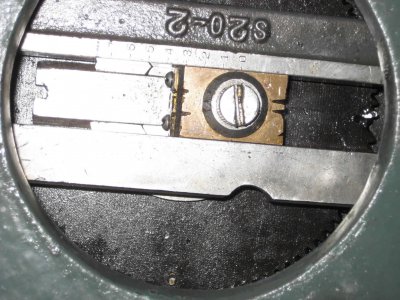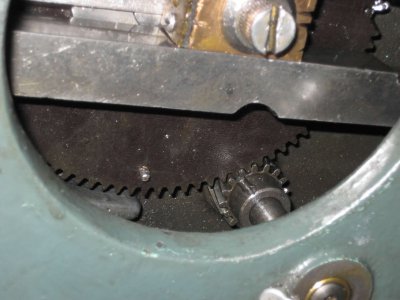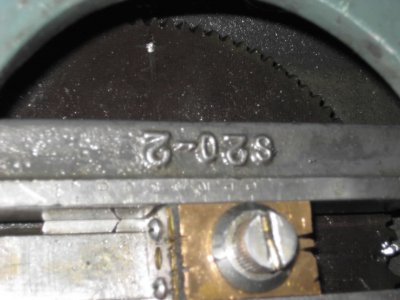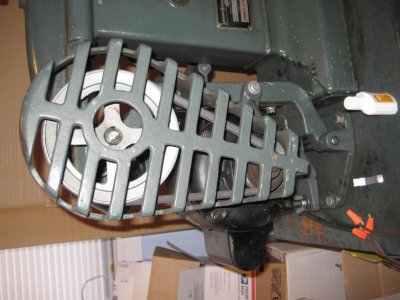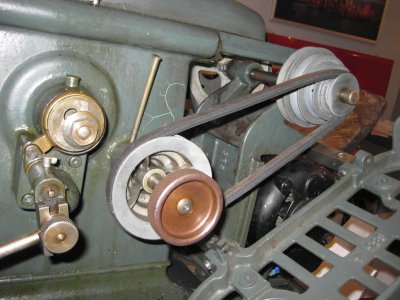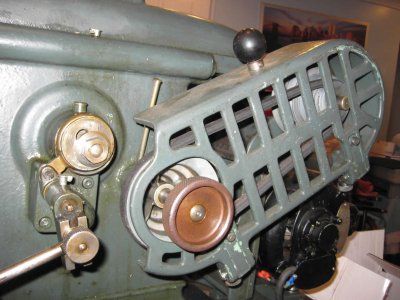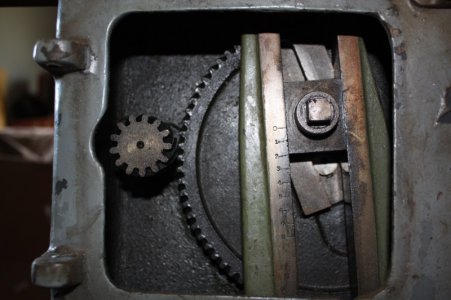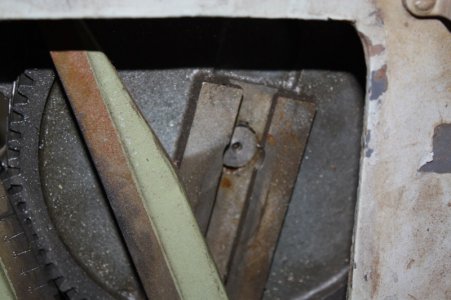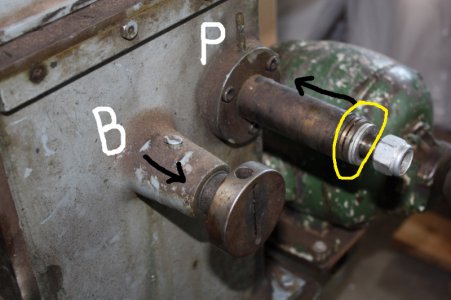Denton, here are some pictures of my Ammco 7" shaper and info -
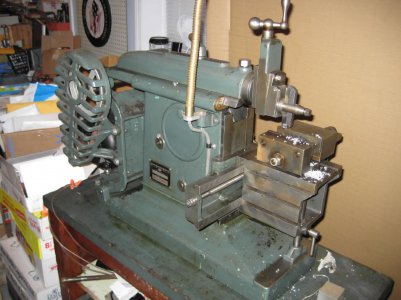
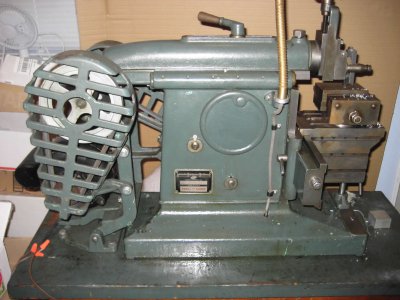
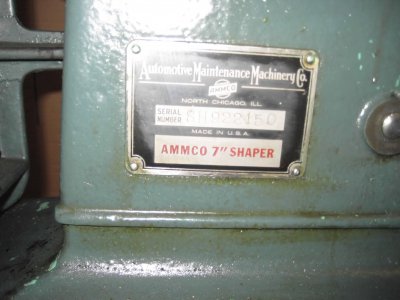
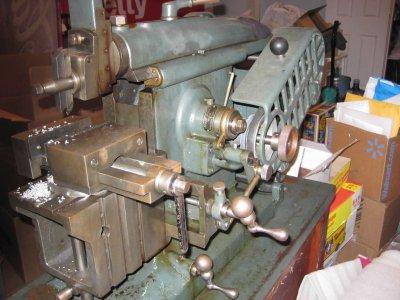
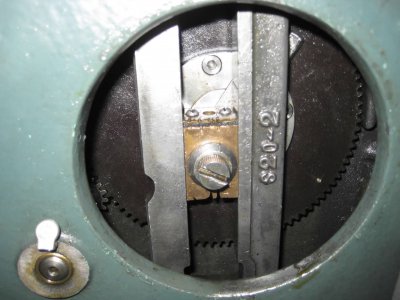
Looking at the last picture, the bronze slide I believe is part number S20-19 the Rocker Arm Shoe, mine is 1-1/2" long and has what looks like a wiper on top. That part is connected to the "slide" (I can't figure out what the part number is or the real name). Mine is 3-3/4" long. The frontside is 3/4" wide x the backside 1" wide (not very accurate measurements as it is hard to access the part), it is 1/4" thick. I will get you more measurements, make a sketch and take better pictures. But this is a start. And......looking at my gears, it looks like I have two spots where there were broken teeth and a repair was made. Paul G










Looking at the last picture, the bronze slide I believe is part number S20-19 the Rocker Arm Shoe, mine is 1-1/2" long and has what looks like a wiper on top. That part is connected to the "slide" (I can't figure out what the part number is or the real name). Mine is 3-3/4" long. The frontside is 3/4" wide x the backside 1" wide (not very accurate measurements as it is hard to access the part), it is 1/4" thick. I will get you more measurements, make a sketch and take better pictures. But this is a start. And......looking at my gears, it looks like I have two spots where there were broken teeth and a repair was made. Paul G







